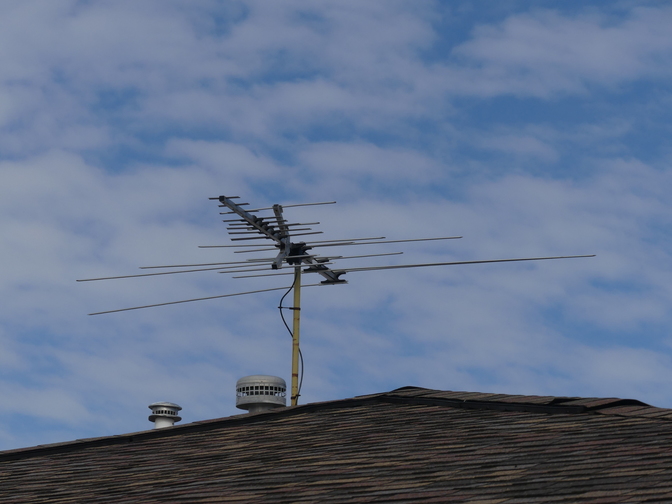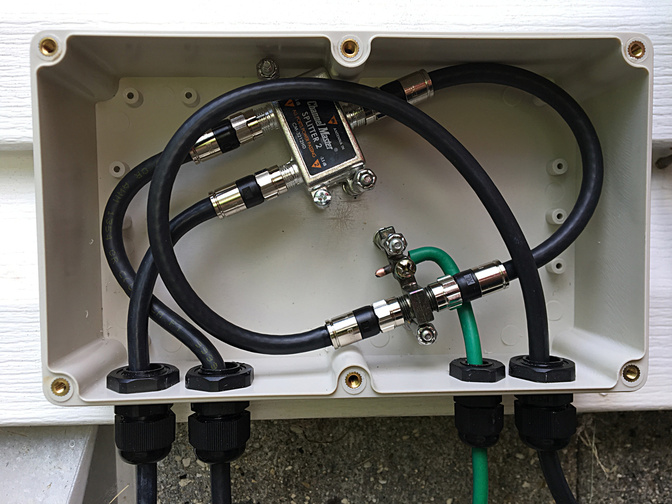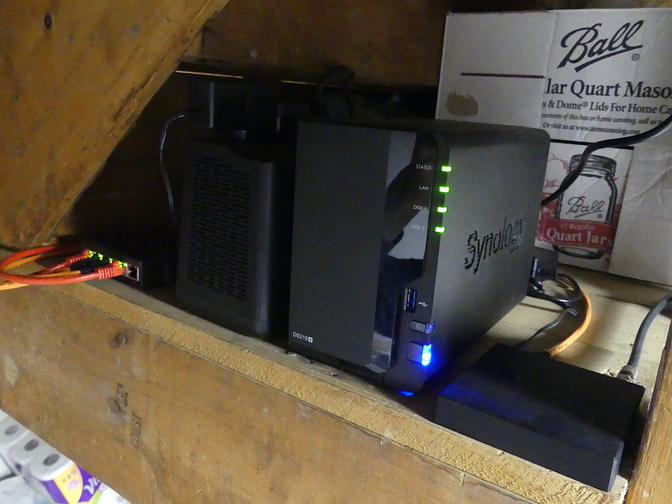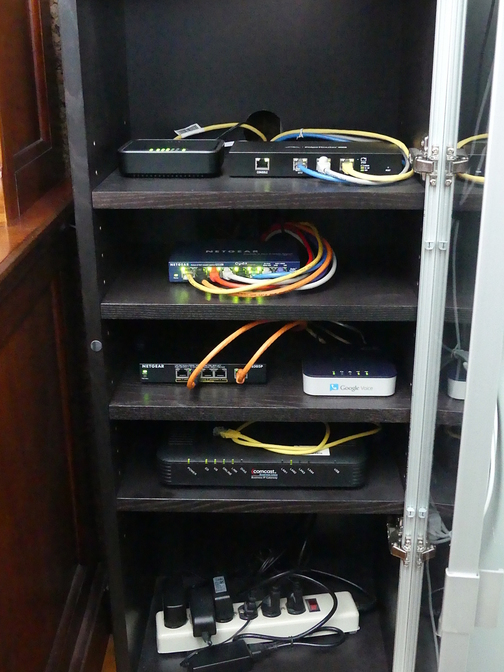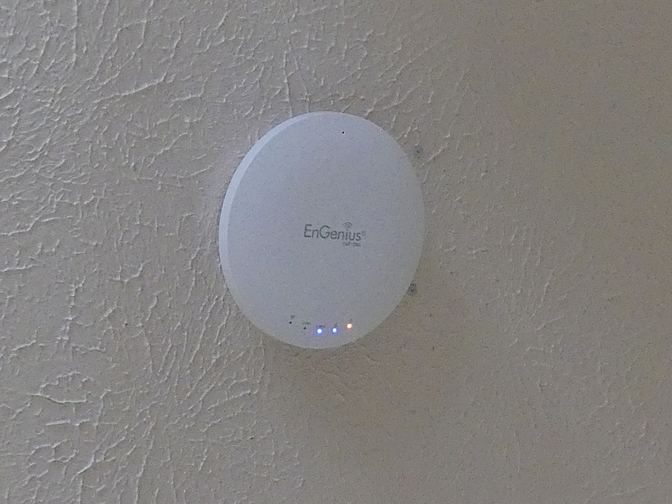So I have been happily using Channels DVR since it was first released. I originally was in a Baltimore apartment building and had been using Mohu omni-directional antennas and running ethernet using cable runways. I actually had a Mohu Sky hanging out my 8th floor window. It worked well, but I always envisioned that I would do things differently if I had my own home.
I bought a house in December. It is a typical Baltimore rowhouse, meaning it is very old (99 years old), made of brick, and is about 12 ft wide. Some of the walls are framed out drywall, and some are plaster. I knew I wanted to set this up for Channels DVR, and was excited to accomplish a full install. I wanted to have networked Apple TVs in the living room, kitchen, office, and bedroom.
I set up a network closet in the office. I ran coax here from the roof antennas to 3 HDHomeRuns.
House Front:


It is a beautiful house. From across the street, the antennas are visible. I had to get a pretty big extension ladder to get up there to mount the antennas, but I got it done. These are RCA Yagi antennas, and they are awesome. They blow anything Mohu out of the water. There are no amplifiers used whatsoever, as these will degrade the powerful signals from these antennas. One antenna is pointed at the Baltimore TV towers, and the other one is pointed at a slightly different angle, more towards DC. The reason for this is that one of the Baltimore channels, CBS, suffers from multipath interference on the direct antenna. The 100% signal will very breifly pixelate at random times. I can fix this issue completely by using the other antenna to pull this station. So I used SignalGH on my phone to make sure that I was getting reception.
The antenna pointed directly at the Baltimore antennas is hooked into a HDHR Quatro, providing 4 tuners for this antenna.
I verified some of these channels using SignalGH on my phone. The following picture shows NBC, ABC, Fox, and CW tuned with the Quatro:

The other antenna, pointed more towards DC needed to be able to pull in CBS without multipath interference, plus the DC stations. I ran the coax from this antenna to a splitter, which goes to the other two HDHomeRuns (2 tuners each), providing for 4 tuners for each antenna.
This screenshot shows 3 DC stations, along with WJZ (Baltimore CBS):

They all come in perfectly.
The Office:


The office TV was more difficult to get the power and ethernet jacks behind, because the wall is plaster almost directly over a brick party wall. I did it by cutting into the plaster in a straight line from the closet to the jacks in order to run the wires. Then patched with spackling and repaint. It didn’t need to look perfect, just pretty good… after all, there was going to be a big TV there. The TV was mounted using concrete anchor bolts through the plaster and into the party wall. This picture is taken by slipping my phone behind the TV:

The Office closet:

The DVR is a Synology DS916+ with 2 Gig RAM. The DVR is the main purpose for the NAS, but it does also run HomeBridge to connect my house lights, fans, and switches to Apple homekit. It also runs a few websites, DNS, DHCP, and stores my important files. I had also tried using it to run a UniFi wifi controller in a Docker instance, but that does frequent read/writes to MongoDB (every 5 seconds) and the I/O causes too much load while also trying to record/view on multiple tuners.
So I ran the controller for my Ubiquiti wifi on a separate system. The NAS does run reverse proxies to allow me to remotely connect to the Unifi controller, the DVR, and some other services throughout the network via the internet. It works great like this. I can record many shows while watching on multiple TVs. Tuner sharing works perfectly. Commercial detection takes 1 to 2 minutes for a 30-minute show. I can stream TV channels via the web using the hardware transcoders. It works perfectly. There are no buffer overflows.
The Living Room:


The Bedroom:


The Kitchen:

So thats it, I just wanted to show off my install of ChannelsDVR in my new house. There are more rooms in the house, but I just wanted to show the specific sections of rooms that I set up for Channels. This is one power user use-case. If setup perfectly, a lot of channels can be obtained at perfect quality for free. These are higher bitrates than cable.
Although I only have one 4K TV, I upgraded all of my Apple TVs to 4K, because I wanted to have gigabit ethernet connections to all of them. There are no speed / latency issues anywhere.

In perfect HD, I am able to pull in ABC (x2 cities), NBC (x2 cities), CBS (x2 cities), Fox (x2 cities), CW (x2 cities), Fox 5 Plus, MyTV, CW, ION, and multiple PBS channels. I get all the local sports from 2 different cities. All the MLB, NFL, NBA games for the teams I follow. All the popular primetime shows. Local News from 2 different cities. In superior quality. I can watch them and any recordings on 4 different TVs, simultaneously. This is true cord-cutting. The only thing I pay Comcast for is my Gigabit Internet.
I’ve got 15 favorite channels that are my main HD goto channels with programs I like. And about 60 other channels that I occasionally look at. They are all 100% perfect even in rain, snow, or high wind.
This took some planning and physical work in order to get set up. I am proud of it. And so I wanted to show off my setup to a forum of users who also use the same software. Thanks to the Channels Devs for the awesome software and great support!
Comments/Questions are welcome.
Dave








